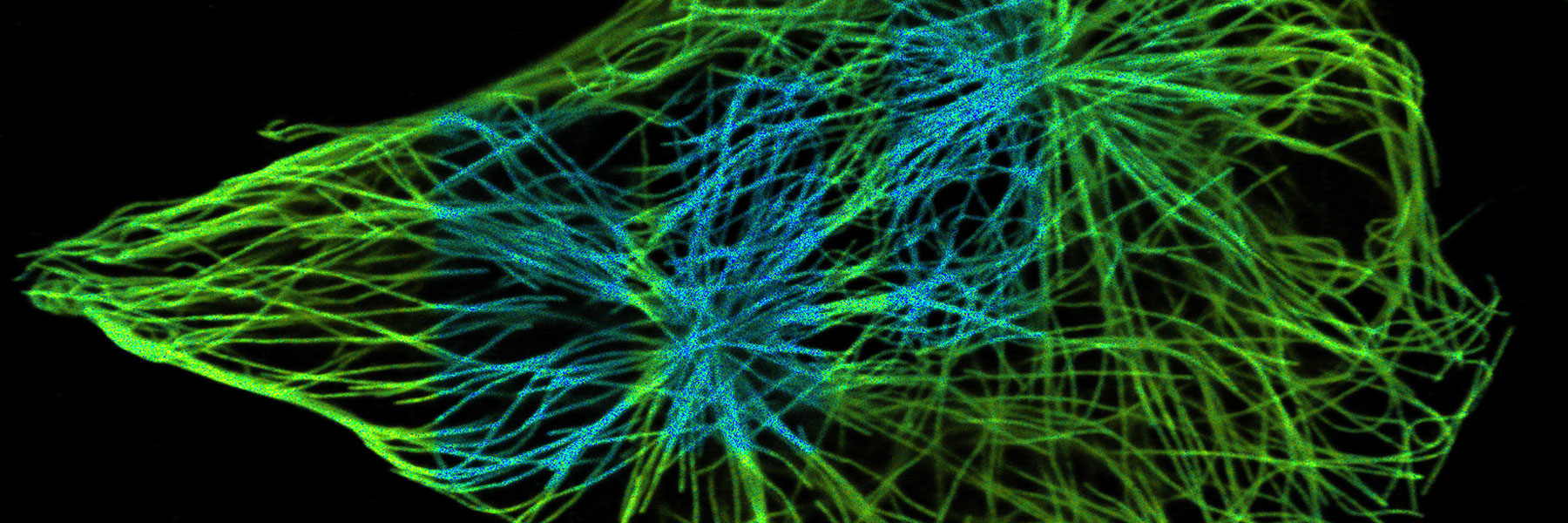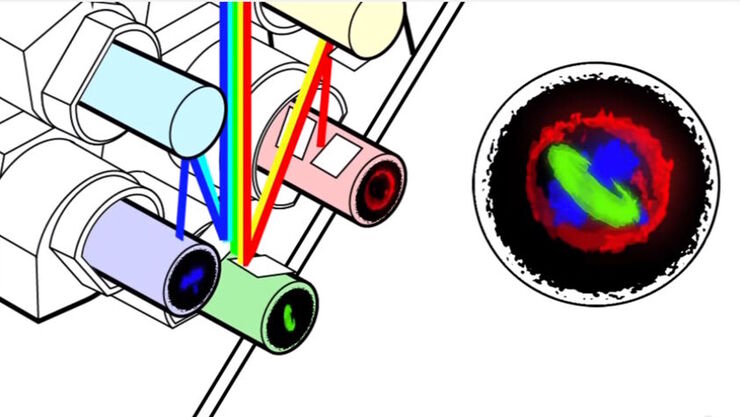Loading...

Visualizing Protein-Protein Interactions by Non-Fitting and Easy FRET-FLIM Approaches
The Webinar with Dr. Sergi Padilla-Parra is about visualizing protein-protein interaction. He gives insight into non-fitting and easy FRET-FLIM approaches.
Loading...

Primary Beam Splitting Devices for Confocal Microscopes
Current fluorescence microscopy employs incident illumination which requires separation of illumination and emission light. The classical device performing this separation is a color-dependent beam…
Loading...

Video: The White Light Laser – How to Effectively Excite Multiple Fluorophores with a Single Light Source
The Leica White Light Laser produces a continuous spectral output between the wavelengths of 470 and 670 nm. It allows you to select 8 excitation lines from 3 trillion unique combinations for…
Loading...
![[Translate to chinese:] Acousto-optics, sketch [Translate to chinese:] Acousto-optics, sketch](/fileadmin/_processed_/f/5/csm_Acousto-optics_sketch_01_67e5a72752.jpg)
声光调制在全光谱型激光共聚焦显微镜系统的应用
荧光最显著的特征是照射光(激发光)和检测光(发射光)颜色之间的偏移,称为斯托克斯位移。因此,在荧光成像中,不仅要将激发光和发射光的相应波长过滤出来,还需要将激发光从发射光中分离。过去,通常用平面光学元件,包括灰色或彩色滤光片和反射镜进行滤光和分光。虽然有多种平面光学元件可供使用,但固定的规格和低切换效率使其在使用上具有局限性,并且采用不同角度或梯度的涂层作为激发光和发射光的调谐方法也被证实并不可行…
